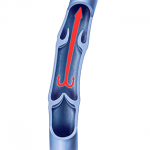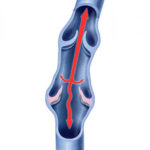Varicose Vein Treatments
Each case is treated individually on case by case basis depending on ultrasound findings, location of the disease and symptoms
All procedures have the same goal: By removing or closing the varicose vein, blood will naturally take an alternative path to non-affected veins in your legs, which take over returning blood from your legs to your heart.
Previously, the most common treatment for varicose veins was a painful surgery called “vein stripping”, which was performed in the operating room, removing the problem veins entirely. This remained the gold standard until the early 2000’s when minimally invasive thermal technology emerged as an alternative standard of care.
Our Treatments:
MOCA (Mechanical Ablation, Chemically Assisted)
Varithena
Radiofrequency Ablation
Phlebectomy
Signs and Symptoms:
- Swollen, twisted veins aren’t the only indication that you have varicose veins.
- Large, bluish, or purple-appearing bulging veins that you can see under the surface of your skin.
- Swelling in your ankles and feet
- Painful or achy legs that feel “heavy”
- Muscle cramping in your legs—particularly at night
- Itchy legs, especially on your lower leg and ankles
- Burning or throbbing sensations in your legs

One-Way Valve
(Good Blood Flow in Vein Valve)

Two-Way Valve
(Bad Blood Flow in Vein Valve)

